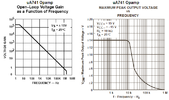Sorry, but that's nothing like a radio - and 741's are completely unsuitable for RF use anyway.
I presume you're not actually building it?, but just simulating it - neither case would work, but simulation might fail even more badly, as you're doing such silly things with 741's.
Is this how the professor expects it to be done?, if so what is he a professor of? - English?.
I presume you're not actually building it?, but just simulating it - neither case would work, but simulation might fail even more badly, as you're doing such silly things with 741's.
Is this how the professor expects it to be done?, if so what is he a professor of? - English?.


